The Everest Panorama Trek is a perfect choice for travelers seeking a taste of the iconic Khumbu region without the strenuous climbs of higher-altitude treks. This captivating adventure offers a shorter trekking experience, focusing on stunning vistas, cultural immersion, and a comfortable pace.
Your journey begins with a thrilling flight to Lukla (Tenzing-Hillary Airport), the gateway to the Everest region. This scenic flight itself is an unforgettable experience, offering breathtaking aerial views of the majestic Himalayan peaks, including Mount Everest, Ama Dablam, and Lhotse.
From Lukla, the trail descends gradually through charming Sherpa villages, crossing vibrant suspension bridges that sway gently above rushing rivers like the Dudh Koshi. Trek through lush rhododendron forests, their vibrant blooms adding a splash of color to the already breathtaking landscapes.
As you ascend, you'll enter the Sagarmatha National Park, a UNESCO World Heritage Site renowned for its incredible biodiversity. Keep an eye out for elusive wildlife such as the elusive snow leopard, the graceful Himalayan Thar, and the playful red panda.
The highlight of this trek is undoubtedly Namche Bazaar, the vibrant "Sherpa Capital" of the Khumbu region. Explore the bustling local market, browse through unique handicrafts, and savor delicious Sherpa cuisine at traditional teahouses. Visit the fascinating Sherpa Culture Museum to delve into the rich history and traditions of this unique community, learning about their ancient customs, religious beliefs, and remarkable resilience in the face of the challenging Himalayan environment.
A short hike to the Everest View Hotel rewards you with breathtaking panoramic views of Mount Everest and the surrounding Himalayan giants. Capture stunning photographs and create memories that will last a lifetime.
Continue your journey to Tengboche, home to the iconic Tengboche Monastery, perched majestically amidst breathtaking scenery. This revered Buddhist monastery offers a serene atmosphere and a glimpse into the deep-rooted spirituality of the region. Witness monks performing ancient rituals and chanting sacred mantras, creating a truly unforgettable spiritual experience.
Best Time to Visit the Everest View Panorama Trek
Choosing the ideal time to embark on the Everest Panorama Trek depends on your preferences and what you hope to experience. Here's a seasonal breakdown:
- Spring (March-May): This is a popular time to trek, offering pleasant weather with moderate temperatures, clear skies, and minimal rainfall. Blooming rhododendrons add vibrant splashes of color to the landscape, creating a truly magical atmosphere.
- Autumn (September-November): Autumn presents another fantastic opportunity for trekking. The weather is generally stable with crisp, clear days and cool nights. The mountain vistas are stunning, and the landscapes are vibrant with autumnal hues. However, be prepared for stronger winds towards the end of the season.
- Monsoon Season (June-August): While the monsoon season brings heavy rainfall and muddy trails, it also offers lush greenery and a unique experience. However, trekking conditions can be challenging, and landslides are possible. Consider alternative options like a scenic helicopter tour or mountain flight during this time.
- Winter (December-February): Winter offers a unique perspective with clear skies, snow-capped peaks, and a serene atmosphere. However, be prepared for cold temperatures and the possibility of snowfall. This season is ideal for those seeking a more peaceful and less crowded experience.
Ultimately, the best time for your Everest Panorama Trek depends on your personal preferences.
At Places Nepal, we're available to help you plan your trek year-round. We can help you choose the best time based on your individual needs and preferences, and we will ensure your safety and comfort throughout your journey.
What makes the Everest Panorama Trek Special?
The Everest Panorama Trek offers a unique and rewarding experience for those seeking a taste of the Himalayas without the intense physical demands of higher altitude treks. Here's what makes this trek truly special:
The Thrilling Lukla Landing: A Gateway to Adventure
The Everest Panorama Trek begins with an exhilarating flight to Lukla Airport, often called "the world's most extreme airport." This scenic flight takes you over lush green hills and through dramatic river valleys, culminating in a thrilling landing on the short airstrip. Witnessing planes land and take off against the breathtaking backdrop of the Himalayas is an experience in itself.
Crossing Iconic Suspension Bridges: A Thrill-Seeking Adventure
One of the highlights of the trek involves crossing numerous suspension bridges that sway gently above raging glacial rivers. These bridges offer thrilling glimpses into the raw power of nature and provide stunning panoramic views of the surrounding valleys. The Hillary Twin Bridge near Namche Bazaar is a particularly impressive sight, with two bridges positioned side-by-side, offering a unique and picturesque crossing experience.
Namche Bazaar: The Sherpa Heartbeat of the Khumbu Region
Namche Bazaar, the vibrant "Sherpa Capital," is a bustling hub of activity. This charming mountain town offers a glimpse into the rich Sherpa culture with its bustling market, a variety of shops, and numerous guesthouses and restaurants. Namche Bazaar serves as a vital center for trade and serves as an acclimatization point for trekkers venturing deeper into the Khumbu region.
Khumjung Village: A Glimpse into Sherpa Life
Experience the authentic charm of Khumjung Village, a traditional Sherpa settlement. Observe the daily lives of the Sherpa people, renowned for their expertise in mountaineering. Visit the Hillary School, established by Sir Edmund Hillary, and explore the surrounding farmlands and villages. Khumjung offers a unique opportunity to connect with the local community and learn about their rich cultural heritage.
Tengboche Monastery: A Spiritual Retreat in the Himalayas
The Tengboche Monastery stands as a beacon of spirituality in the Khumbu region. This revered Buddhist monastery offers a serene atmosphere and provides a glimpse into the deep-rooted religious traditions of the Sherpa people. Witness monks performing ancient rituals and chanting sacred mantras, creating a truly unforgettable spiritual experience.
Hotel Everest View: A Panoramic Perspective
No trip to the Everest region is complete without a visit to the iconic Hotel Everest View. Perched high above the valley, this legendary hotel offers breathtaking panoramic views of Mount Everest and surrounding peaks. Enjoy a cup of tea or coffee while soaking in the awe-inspiring scenery.
A Trek for Everyone: Accessible Adventure in the Himalayas
The Everest Panorama Trek is designed to be accessible to a wide range of travelers, including families, seniors, and those new to trekking. The moderate altitude and gradual ascent make it a comfortable and enjoyable experience, allowing you to fully appreciate the beauty of the Himalayas without the intense physical demands of higher altitude treks.
A Shorter Adventure: This trek offers a shorter and more manageable itinerary, perfect for those with limited time who still yearn to experience the magic of the Everest region.
Sustainable Tourism: By choosing this trek, you support local communities and contribute to sustainable tourism practices in the region.
The Everest Panorama Trek offers a unique blend of stunning scenery, cultural immersion, and a comfortable trekking experience, making it an unforgettable adventure for travelers of all levels.

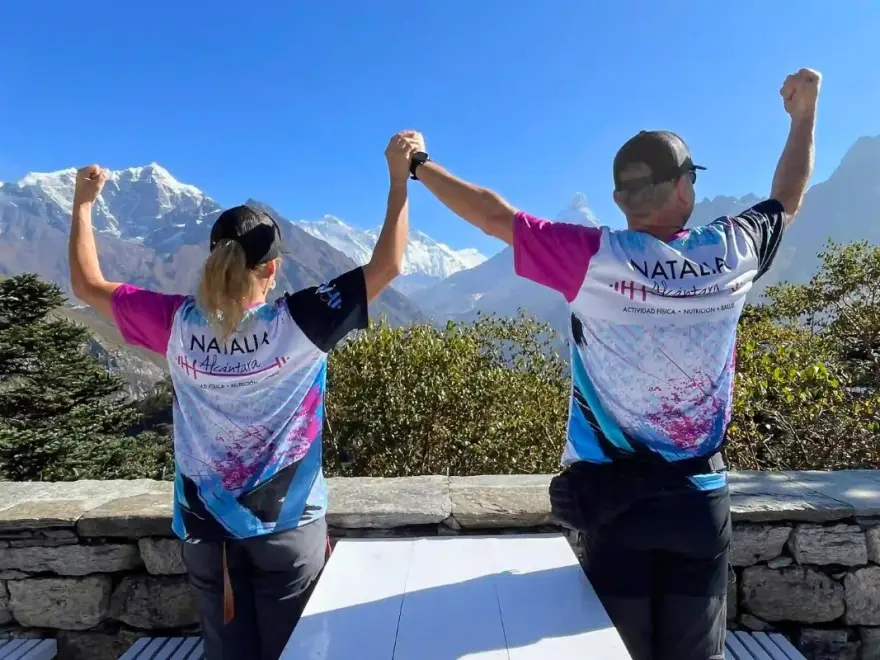

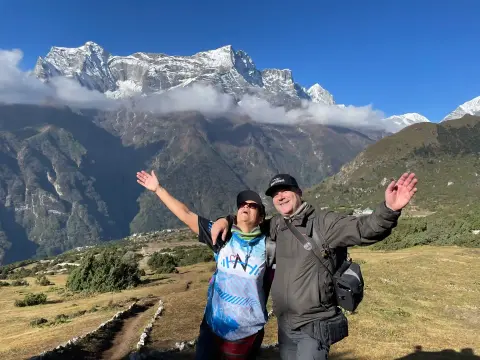

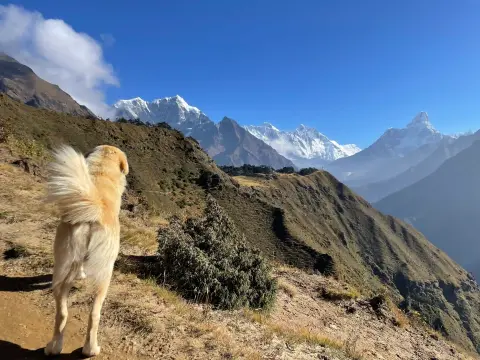
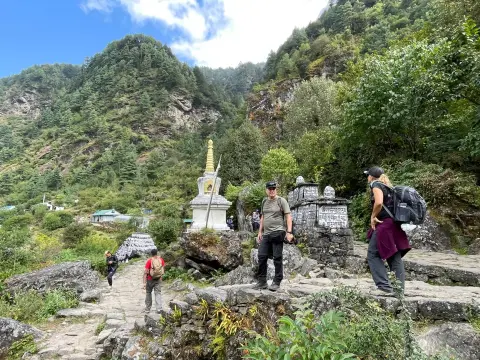

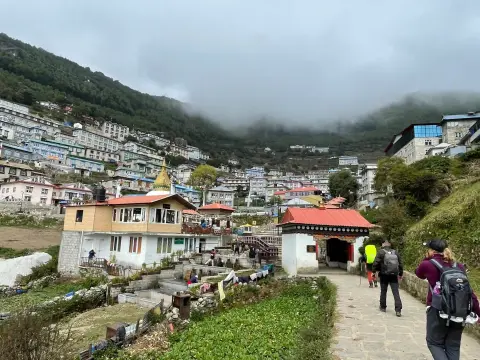


-webp.webp) Trek Permit Required
Trek Permit Required 

















































